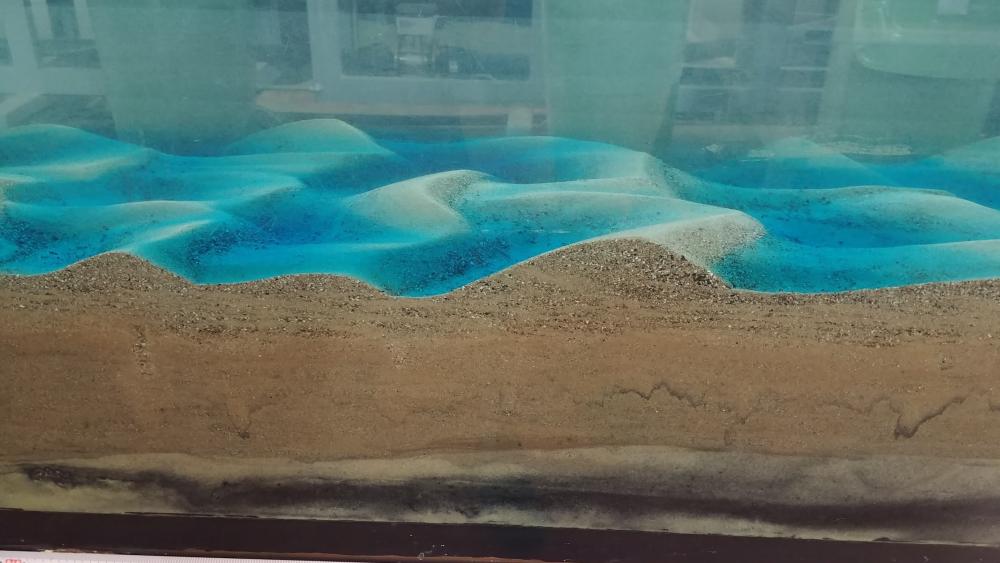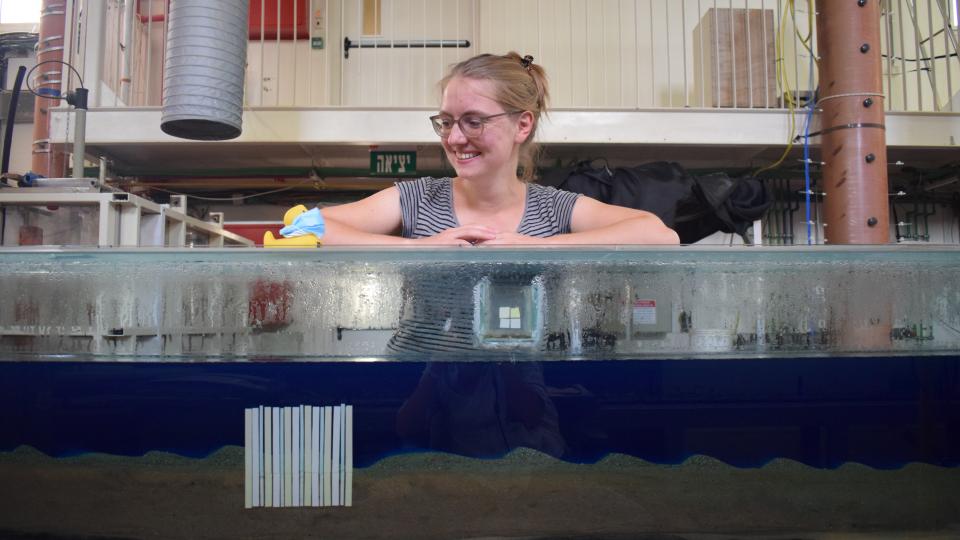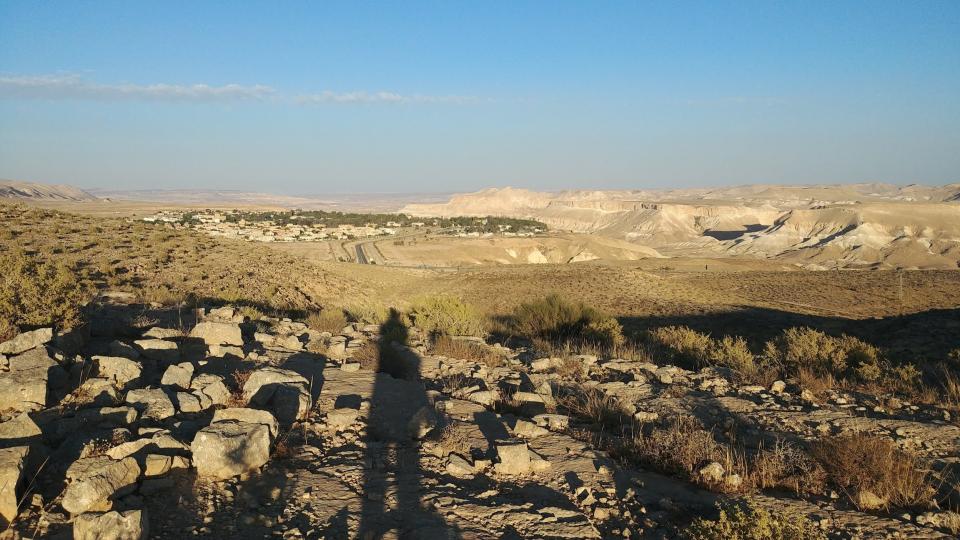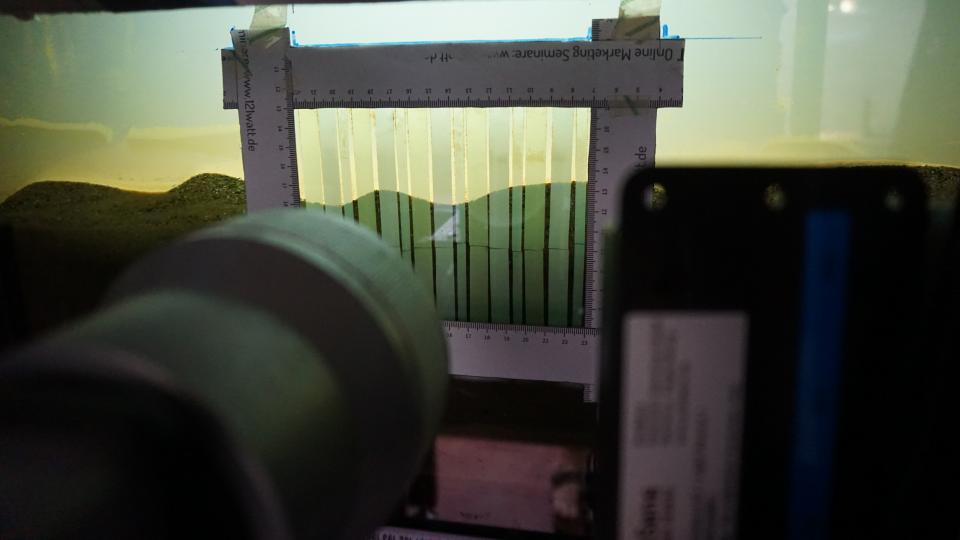
Bedforms, e.g. ripples and dunes, are formed and set into motion by stream water flow. The picture shows the streambed investigated at the Zuckerberg Institute for Water Research, Israel. The blue colour close to the sediment results from dyed blue pore water that reached the surface water by groundwater exfiltration. The surface water was stagnant during this shot. | Photo: Hanna Schulz
As part of my dissertation, I spent nine months of my doctoral research at the Ben-Gurion University of the Negev in Israel. The lab of hydrologist Shai Arnon at the Zuckerberg Institute for Water Research is located within a breath-taking environment in the middle of the Negev Desert surrounded by national reserves.
For my research I was able to use one of the unique flumes of the working group. The flume system replicates a stream and allows the simulation of discharge dynamics, moving streambeds, and groundwater in- and outflow. The motivation for the study was the increasing regulation of river systems by hydropower plants and waste water treatment plants. These regulations may cause discharge fluctuations which themselves may impact the microbial respiration within the streambed. The microbial respiration in the streambed was investigated using planar optodes – non-invasive sensor foils. These optodes provided high-resolution images of oxygen and carbon dioxide distribution. The main objective of the study was to quantify how typical discharge regimes affect microbial respiration in stream sediments. Preliminary results show large differences in oxygen and carbon dioxide distributions between moving and stationary sediment conditions. In the stationary streambed, CO2 is accumulated in the bed to a much greater extent as compared to the case with a moving streambed. Faster exchange under moving streambed conditions consequently results in higher CO2 emission to the atmosphere as compared to stationary streambeds.
Despite the increasing restrictions due to Covid-19 it was possible for me to complete my experiments. This research stay turned out to be irreplaceable on both the professional and personal levels and will always be treasured. And it is not over yet: I collected an extensive amount of data whose analysis and publication will keep me busy over the coming months.

Experiments using non-reactive tracers, e.g. dye, allow for the assessment of pathways of surface water intrusion into the streambed under various flow velocities. The picture shows doctoral candidate Hanna Schulz at the flume lab of Shai Arnon at the Zuckerberg Institute for Water Research, Israel. | Photo: Silvia Gobrecht

The Zuckerberg Institute for Water Research as part of the Ben-Gurion University of the Negev is located in the village Midreshet Ben-Gurion in the middle of the Negev desert surrounded by breathtaking nature. | Photo: Hanna Schulz

The moving sediment and the microbial respiration were investigated using imaging techniques. The distributions of oxygen, carbon dioxide, and pH were detected by planar optodes. The motion of the sediment was captured with time-lapse images using an infra-red camera. | Photo: Hanna Schulz




